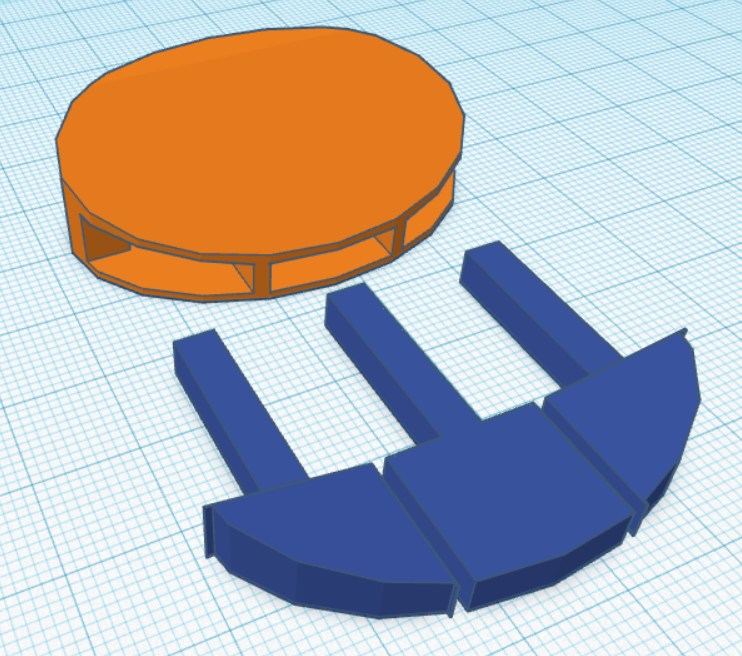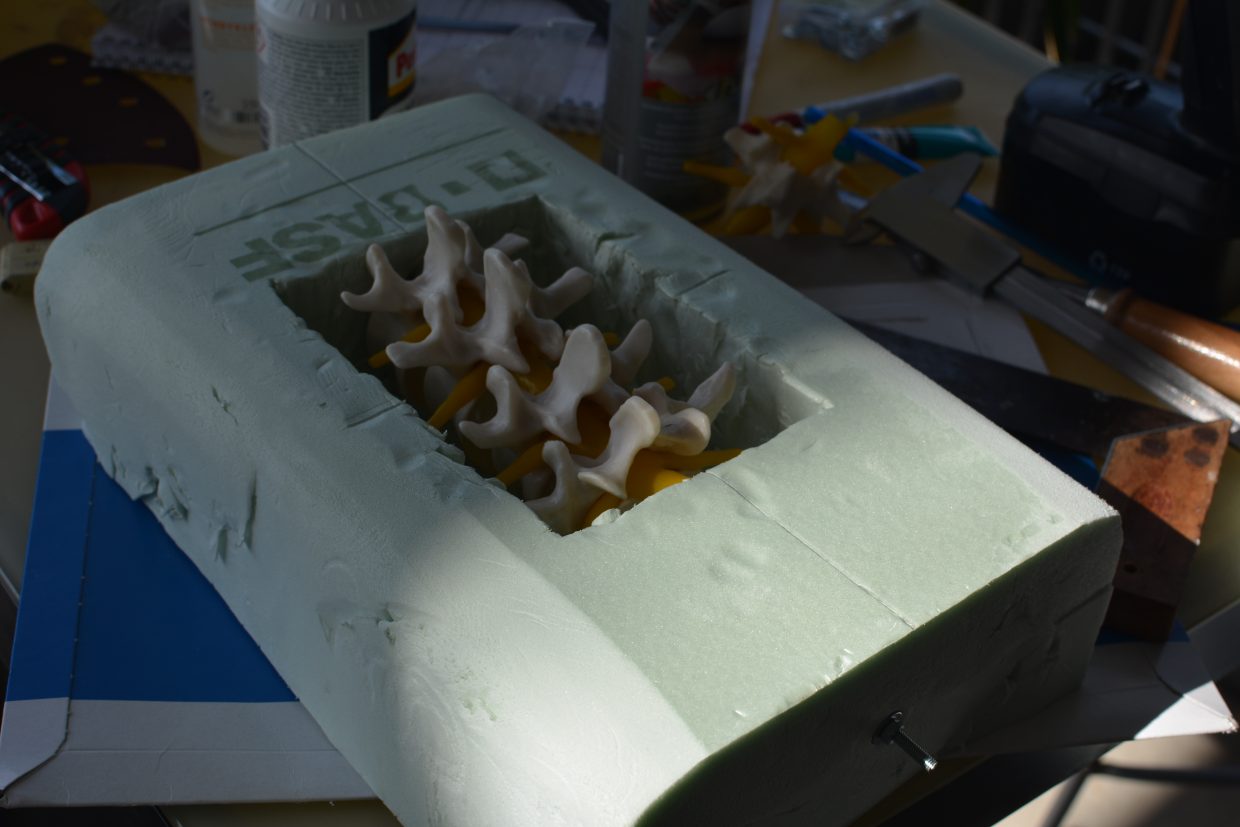Build
For this first prototype I am focusing on replicating the hernia in a realistic manner. The first implication is to reproduce a human spine. To simplify this process and save myself some time, I have bought a biology-spine normally meant for educational purposes. We will only use the last five vertebrates (also called the lumbar vertebrae) because this is where a disc hernia mostly occurs (see section: Hernia and its various types). This also keeps the complexity of the system to a bare minimum. These five vertebrae will be placed in a body over which a skin replication will be placed (see Simulation of the human skin). The intervertebrae of the original study-object will be replaced by 3D-printed counterparts (see Simulation of hernia (HNP) ). These counterparts will enable me to manipulate the intervertebrae and indirectly influence the vertebrae. This then, will enable students to experience the hernia.
I want to explore two ways to simulate the hernia, the first approach is mechanical. The second is electronic.
Mechanical

With the mechanical approach balloons inside the 3D-printed vertebrae are connected via tubes to small pumps. For this first prototype the pumps will be thick syringes (see image). However, perpetuating the system purely on air is not ideal. The air will form to the vertebrates instead of pushing them away so the hernia can be felt. As a alternative I was given the advice to try grounded coffee mixed with water. The coffee gives the balloons more mass and makes it more solid. This way the vertebrae are pushed more to the side when the balloon is inflated.
 Electronic
Electronic
Another approach for simulating a hernia is by little valves in the intevertabrae and within these valves plastic rods would be located. By means of electronic motordrivers the rods can be pushed up or down. The advantage to this approach is the height and thus severity of the hernia can be more closely determined. The setup however, is somewhat more complex than the mechanical approach.
MORE ABOUT THE BASE, POLYSTYRENE
Observations
Pouring the water-coffee mix inside the balloons and connecting the tubing to the balloons the system pretty quickly blocks itself. The mix is too thick to run through the tubing and the syringe is not strong enough a pump to push the mix further into the balloon. Even when drastically shortening the tubing, the mix still did not manage to flow inside the balloon as imagined.
After deciding to stick with an air-filled system as means of a testable artefact I went on to conduct the first user tests. These tests are with experts to see whether the system as now imagined has a good change of being usable when further developed. However, during these tests it soon came to light that the artefact as is, will not work. This is because in reality the hernia cannot physically be felt. So if proceeded with the current design, the system would have a low chance of being very useful as an educational tool.
Recommendations
It is clear that the current approach of this first version is not working. The balloons cannot simulate the hernia since the cannot exert enough force on the vertebrae and even if I would get it to work, it would be to unrealistic to be useful. There are two ways to reclaim the usefulness of the project. Either we drop the focus on the hernia as a pathology, and switch to a blockage. With a blockage one of the patient’s vertebrae is dislocated and shifted over the underlying vertebra due to the dislocation of the membranes surrounding the vertebra . This dislocation can (in contrary to the hernia) be physically felt when comparing the vertebrae by means of touch.
Another solution is to throw away this prototype completely and start over. The essence of this project was to have students of physiotherapy experience the treatment of the hernia inside the classroom, and that can still be done by adapting the prototype. Although I already put time and effort in this first version, I shouldn’t be afraid to write it off and throw away the concept, that is why I decided to do rapid prototyping in the first place. Furthermore I already invested a lot of time in understanding and studying the hernia in detail. If I was to switch to the blockage I would have to study it again and there is a chance off running into the same mistake as I did now.
